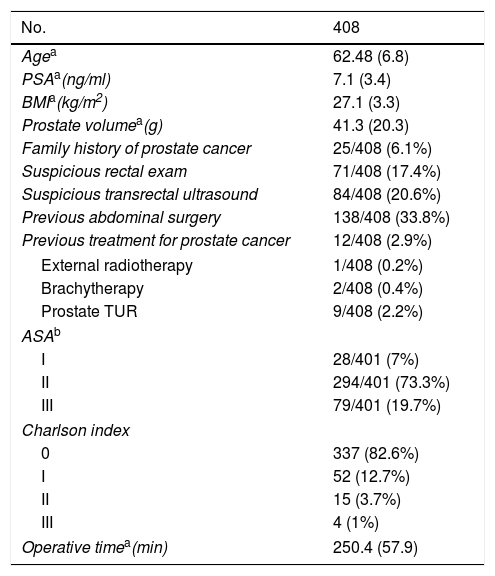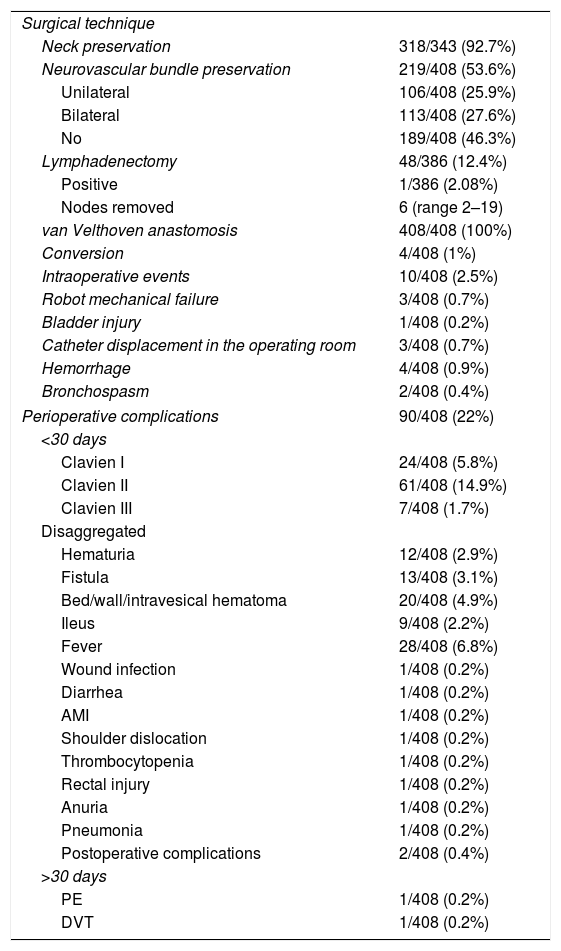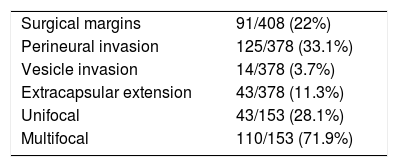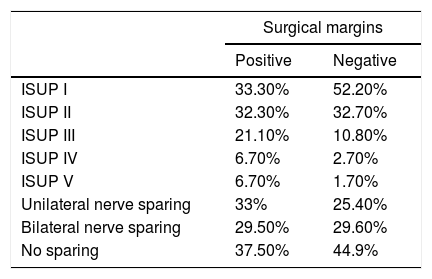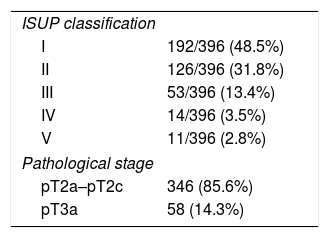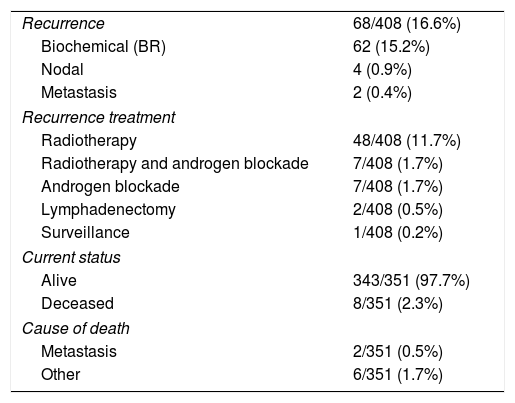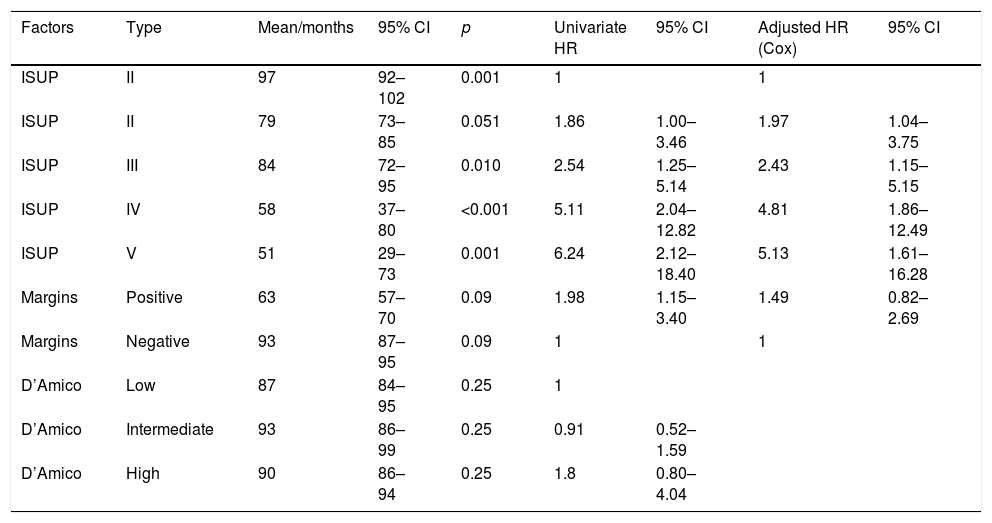The objective of this study is to evaluate the general characteristics and oncological results in a cohort of 408 cases submitted to da Vinci Standard 4-armed robot-assisted radical prostatectomy (RARP), performed between October 2006 and February 2015 at Clínico San Carlos hospital. Statistical analysis was performed with the SPSS 20.0 program. Qualitative variables are presented with their frequency distribution and quantitative variables with their mean and standard deviation or median and interquartile range. The χ2 test was used to analyze the association of qualitative variables. The disease-free survival outcome variable was evaluated with a Kaplan–Meier curve analysis, and the differences were contrasted with the Breslow test. A Cox regression model was adjusted. Among the results, we highlight the follow-up of 47 months (32–68.75m), recurrence-free survival of 90 months (95% CI, 86–94), median time to recurrence of 23 months (10.5–37m), recurrence 16.6% (68/408), biochemical recurrence (62/498, 15.2%) and 22% of complications, mostly Clavien I–II. The results are summarized in Tables 1–7 and Fig. 1.
Conclusions(1) RARP is a safe technique with an acceptable percentage of complications, mostly minor (Clavien grades I and II), (2) We found a higher probability of remaining recurrence-free in the lower grades of the ISUP classification and a higher probability of recurrence in high-risk cases, and (3) The multivariate model showed that the ISUP grade was significantly related to survival and the ISUP and PSM classification grades were independent prognostic variables.
El objetivo de este estudio es evaluar las características generales y los resultados oncológicos en una cohorte de 408 casos de prostatectomía radical asistida por robot da Vinci Standard de 4 brazos, realizadas entre octubre del 2006 y febrero del 2015. El análisis estadístico se realizó con el programa SPSS 20.0. Las variables cualitativas se presentan con su distribución de frecuencias y las cuantitativas con su media y desviación estándar o mediana y rango intercuartil. La asociación entre variables cualitativas se analizó con el test de la χ2. La variable de resultado de la supervivencia libre de enfermedad se evaluó con un análisis de curvas de Kaplan-Meier y se contrastaron las diferencias con el test de Breslow. Se ajustó un modelo de regresión de Cox. Entre los resultados destacamos un seguimiento 47 meses (32-68,75 meses), supervivencia libre de recurrencia 90 meses (IC del 95%, 86-94), mediana de tiempo a recurrencia de 23 meses (10,5-37 meses), recurrencia del 16,6% (68/408), recidiva bioquímica (62/498, 15,2%) y un 22% de complicaciones, la mayoría Clavien I-II. Los resultados se resumen en las tablas 1 a 7 y en la figura 1. Conclusiones: 1) la prostatectomía radical robótica es una técnica segura con un porcentaje asumible de complicaciones, en su mayoría menores (grados I y II de Clavien); 2) encontramos mayor probabilidad de permanecer libre de recidiva en los grados más bajos de la clasificación de ISUP y mayor probabilidad de recidiva en casos de alto riesgo, y 3) en el modelo multivariante comprobamos que el grado ISUP se relacionó de forma significativa con la supervivencia y fueron variables pronosticas independientes los grados de la clasificación ISUP y los márgenes quirúrgicos positivos.






